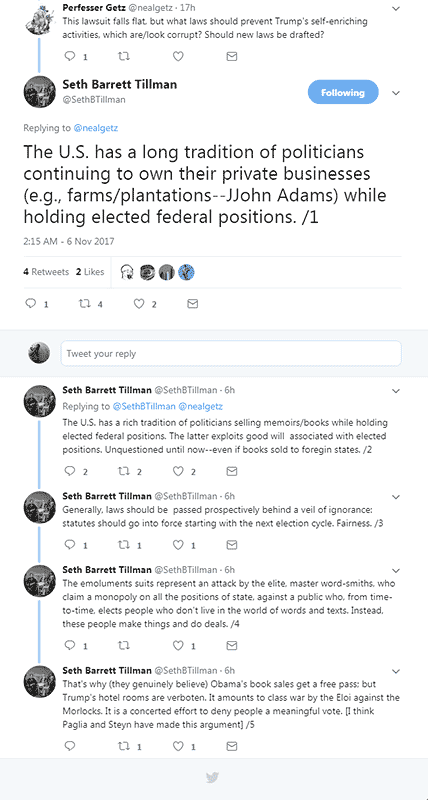(In the light of the Cambridge Analytica revelations and controversy. I thought this 2014 post might be due for a rerun)
There has been much discussion recently of Catalist, a database system being used by the Democratic Party to optimally target their electioneering efforts…see Jonathan’s post here. I’m reminded of Eugene Burdick’s 1964 novel, The 480. The book’s premise is that a group within the Republican party acquires the services of a computing company called Simulation Enterprises, intending to apply the latest technology and social sciences research in order to get their candidate elected. These party insiders have been inspired by the earlier work of the 1960 Kennedy campaign with a company called Simulmatics.
Simulmatics was a real company. It was founded by MIT professor Ithiel de Sola Pool, a pioneer in the application of computer technology to social science research. Data from 130,000 interviews was categorized into 480 demographic groups, and an IBM 704 computer was used to process this data and predict the likely effects of various alternative political tactics. One question the company was asked to address by the 1960 Democratic campaign, in the person of Robert F Kennedy, was: How best to deal with religion? There was considerable concern among some parts of the electorate about the prospect of choosing a Catholic as President. Would the JFK campaign do better by minimizing attention to this issue, or would they do better by addressing it directly and condemning as bigots those who would let Kennedy’s faith affect their vote?
Simulmatics concluded that “Kennedy today has lost the bulk of the votes he would lose if the election campaign were to be embittered by the issue of anti-Catholicism. The simulation shows that there has already been a serious defection from Kennedy by Protestant voters. Under these circumstances, it makes no sense to brush the religious issue under the rug. Kennedy has already suffered the disadvantages of the issue even though it is not embittered nowand without receiving compensating advantages inherent in it.” Quantitatively, the study predicted that Kennedy’s direct addressing of the religion issue would move eleven states, totaling 122 electoral votes, away from the Kennedy campbut would pull six states, worth 132 electoral votes, into the Democratic column.
It is not clear how much this study influenced actual campaign decision-making…but less than three weeks after RFK received the Simulmatics report, JFK talked about faith before a gathering of ministers in Houston. “I believe in an America where religious intolerance will someday end,” Kennedy said, “where there is no Catholic vote, no anti-Catholic vote, no bloc voting of any kind.” (Burdick’s novel also suggests that the Kennedy campaign used Simulmatics to assess the effects of a more-forthright posture on civil rights by the campaign, and furthermore to analyze Kennedy’s optimal personality projection during the debatesI don’t know if these assertions are historically correct, but the religion analysis clearly was indeed performed.)
Considerable excitement was generated when, after the election, the Simulmatics project became publicly known. A Harper’s Magazine article referred to to the Simulmatics computer as “the people machine,” and quoted Dr Harold Lasswell of Yale as saying, “This is the A-bomb of the social sciences. The breakthrough here is comparable to what happened at Stagg Field.” But Pierre Salinger, speaking for the Kennedy campaign, asserted that “We did not use the machine.” (Salinger’s statement is called out as a lie in the recent book, The Victory Lab: The Secret Science of Winning Campaigns.)
In Burdick’s novel, the prospective Republican candidate is John Thatch, head of an international engineering and construction company. Thatch has achieved popular renown after courageously defusing a confrontation between Indians and Pakistanis over a bridge his company was building, thereby averting a probable war. Something about Thatch’s personality has struck the public imagination, anddespite his lack of political experiencehe looks to be an attractive candidate. But initially, the Republicans see little hope of defeating the incumbent Kennedy“the incumbent is surrounded by over four years of honorific words and rituals,” a psychologist explains. “He seems as though he ought to be President. He assumes the mantle.” This outlook is deeply disturbing to a Republican senior statesman named Bookbinder, who strongly believes that defacto 8-year terms are bad for the country…but if it is true that Kennedy is unbeatable, then the best the Republicans can hope to do is lose as well as possible. Things change when Kennedy is assassinated and the election becomes a real contest.
Bookbinder and Levi, another Republican senior statesman, are introduced to Simulation Enterprises by a young lawyer named Madison (Mad) Curver and his psychologist associate (quoted above), a woman named Dr Devlin. Mad and Dr Devlin explain that what Sim Enterprises does is different from the work done by garden-variety pollsters like the one they have just met, Dr Cotter:
“The pollster taps only a small fragment of the subject’s mind, attention, background, family influence, and habits. The Simulations thing, just because it can consider thousands of elements influencing the subject, even things he may not know himself, gets much better results.”
“And one further thing, Book,” Mad said. “Simulations Enterprises can predict what people will do in a situation which they have never heard of before. That was the whole point of the UN in the Midwest example. No one has gone out there and asked them to vote on whether we should get out of the UN, but Dev outlined a procedure by which you can predict how they will react…if they ever do have to vote on it.
Again Bookbinder had the sharp sense of unreality. Unreal people were being asked invented questions and a result came out on green, white-lined paper…and when you got around to the real people six months later with the real question they would act the way the computer had said they would.
